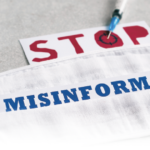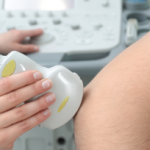
Maksim Kabakou / SHUTTERSTOCK.COM
Every year, my program goes through a ritual—I scrub my face, put on a smile and meet hordes of medical residents from across the country. And every year, I do my best to convince all of them that Baltimore would be an amazing place for them to complete their medical subspecialty training in rheumatology. Now that the ritual is over, I have a confession to make: In addition to questions about training and research, I should really be asking trainees one question that is even more relevant to their experience as rheumatology fellows: How many words per minute do you type?
In the EPIC epoch, the mere act of documentation has become an all-consuming enterprise that takes us away from our patients and our lives. A recent article indicates that for every minute a provider spends with a patient, that provider will spend two minutes documenting the point of contact.1 Thus, every morning, when I sit in front of my computer, my eyes naturally drift to the number of unsigned notes I have, like some people’s eyes drift to the sports scores in the newspaper. As I write, I am under threat of suspension by my institution for spending too much time taking care of patients and not enough time documenting that care.
Part of the problem is the care that we provide. I have yet to see a smart phrase that allows me to insert a block of text that accurately describes a patient with eosinophilic granulomatosis with polyangiitis, and I am even more certain that my patient cannot be reduced to a Likert scale. In rheumatology, more than in any other field, each patient is unique, and there is no easy way to avoid a longhand description of the trials and tribulations that brought that patient to today.
My trainees know that I insist on longhand descriptions that are written in English, and not text-message shorthand. Sentences should begin with a capital letter and end with a period. Avoid gratuitous abbreviations and medical slang. One of my fellows and I have a running joke about the use of parallel structure, based on a comment I made about one of his notes during training. Writing is a means of crystalizing our thoughts about a patient. Putting fingers to keyboard forces us to deconstruct our intuitions regarding the patient’s illness and to reexamine the faulty inferences and biases that may stand between us and the truth. Writing well is how we communicate our expertise and ensure that our thoughts do not get lost.

